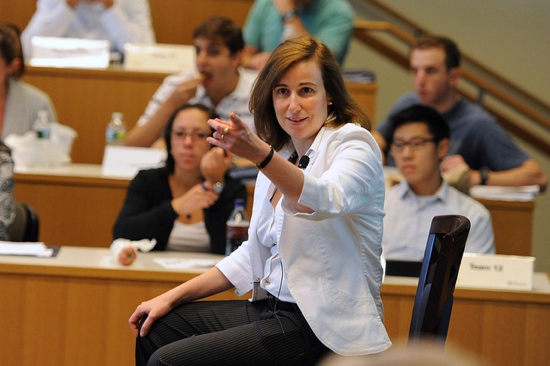Five Executive MBA programs that are partnerships among business schools captured the top five positions in the 2012 Financial Timesranking of the world’s best Executive MBA programs.
For the fourth year in a row, the joint program between Northwestern University’s Kellogg School of Management and the Hong Kong University of Science and Technology ranked first. It was followed by No. 2 Columbia and London Business School’s joint program, and No. 3 Trium, a program put on by HEC Paris, the London School of Economics, and New York University’s Stern School of Business.
But two more joint programs also rounded out the top five of the FT ranking: Tsinghua University’s joint EMBA with INSEAD was ranked fourth—even though this was the first time it participated in the FT ranking–and UCLA’s Anderson School’s program with the National University of Singapore was fifth.
INSEAD HAS THE HIGHEST RANK OF AN SINGLE SCHOOL EMBA PROGRAM AT SIXTH PLACE
The first single school EMBA program to make the list was INSEAD’s EMBA program which was ranked sixth. The highest ranked U.S. program by a single school, the University of Pennsylvania’s Wharton School EMBA in both Philadelphia and San Francisco, was ranked eighth—same as last year.
The FT rankings are somewhat counter-intuitive to some business school insiders because they believe that going it alone is the only way to insure the highest possible quality of an EMBA program. The University of Chicago’s Booth School, which invented the EMBA degree in the 1940s, is the most prominent school to hold this position. Booth’s EMBA program was ranked tenth.
Joint programs are far more vulnerable to quality breakdowns that result from both weaker faculty at partner schools to issues over the ownership of the program. Yet, 14 of the Financial Times’ top 100 EMBA programs are partnership ventures between or among at least two or more schools.
It’s highly questionable that Northwestern’s standalone EMBA program would be ranked 23rd in quality, down six places from 17th last year, while two of its partnership programs with such schools as WHU Beisheim and Hong Kong UST, would actually rank higher at 18th and first, respectively. But the FT’s methodology routinely turns out unusual and counter-intuitive results.
THE MOST IMPORTANT COMPONENT OF THE METHODOLOGY IS ADJUSTED SALARY
Salary looms large in the FT’s methodology with a 40% weight placed on the average alumnus salary three years after graduation (adjusted in a way to favor schools that enroll students from economies where earnings are much lower) and the percentage difference between pre-EMBA salary and current income. Because U.S. EMBA students tend to be younger, they typically earn less and therefore fare less well in this survey.
The methodology also tends to favor non-U.S. schools because it awards schools that boast high percentages of international faculty, international students, an international board of advisors, and international course experience. In Europe, where most countries are smaller than a single U.S. state, it is far easier to claim a higher percentage of “international” faculty or students.
The FT said that 18 of its top 100 programs this year were not on its year-earlier list. A dozen of those schools participated for the first time. Besides the Tsinghua/INSEAD program that debuted in fourth place, Sun Yat-sen University in Guangzhou, China, entered the ranking for the first time at 11th place.
(See following page for the top 25 EMBA programs and how they fared versus last year)






Questions about this article? Email us or leave a comment below.